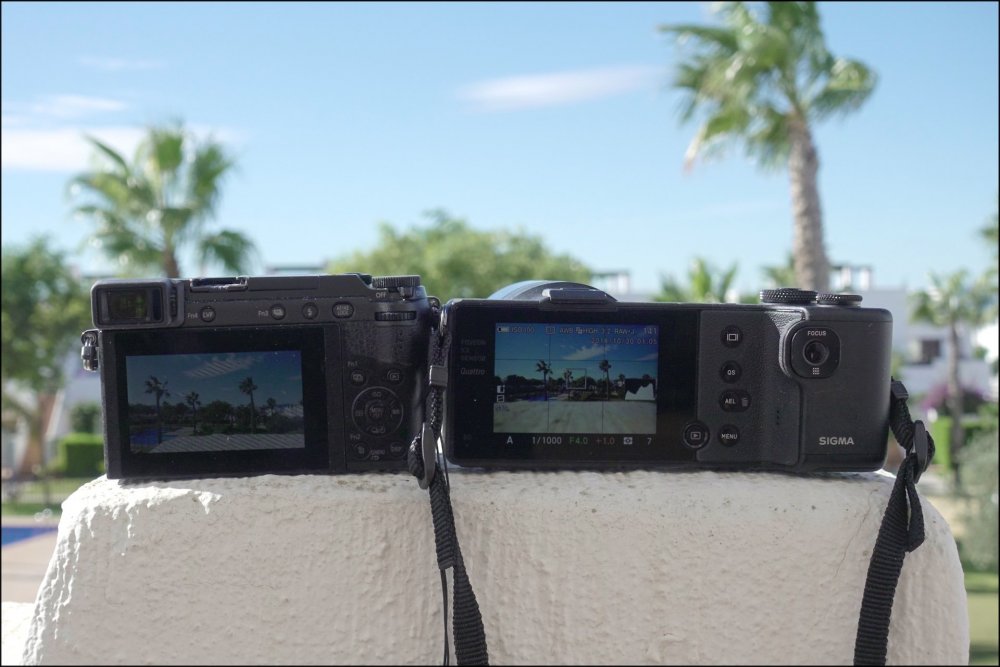-
Posts
5,964 -
Joined
-
Last visited
Content Type
Profiles
Forums
Articles
Everything posted by BTM_Pix
-
Yeah thats the beauty of it in that you can scale up or down what monitor you use with it depending on circumstances and there are a few 3 inch Android phones around now that are ideal. Only thing to be careful of with older devices like the iPod Touch is that it needs to be a model that can work on 5.8ghz wifi. I really like the Sidefinder thing that SmallHD did for the 500 series. Pity someone doesn't do it for other monitors as having a 5" monitor in that side on configuration makes so much more sense with narrow cameras.
-
True enough but its the NPF batteries that add it back on. Having said that, my Ninja V even using one of the slimmer NPFs would have to do some serious low carbing to get down to my phone's level of slenderness Yeah, the fixed battery is a limitation but on the upside finding alternative power sources to keep the phone running is a lot easier.
-
Its a tough ask these days finding one with AES3 but if you don't mind using a cheap adapter to get to SPDIF then there are a couple of Tascam options at not too horrendous a price. The SS-R100 will give you the rack mount option for just under £400. https://www.thomann.de/gb/tascam_ssr100.htm If you want to save some money, have it double as a field recorder and actually get a higher spec on the recording front then you should be able to pick up a used HDP2 for about half that price. Its a bit of a dinosaur by modern field recording standards but it will get you that digital input that you need which the newer ones lack. https://www.soundonsound.com/reviews/tascam-hdp2
-
Hey @mercer This might seem like a sledgehammer to crack a nut but bear with me. This is the Acsoon CIneEye HDMI that enables you to transmit the HDMI camera output to your Android or iOS device over wifi up to a range of about 100 metres. For just over £200, it does seem slightly overkill to spend that amount when you are only going to be transmitting about 2% of that range and a cynical view would be that used in the way I've got it here makes it is a very, very expensive virtual HDMI cable . And you'd probably be right in that cynicism or perhaps wrong depending on how you work. Starting with the practicals, here is how I have it mounted to the cage. Initially I was finding it slightly awkward to find a good position to mount it because its tripod mount is on the base so I used the cheap mini ball mount to effectively change it to a 90 degree angle. One happy accident of this is that having the adjustable ball head means that when it comes to changing batteries, the ball head can be loosened and the CineEye can be swung away. The phone is mounted with a SmallRig monitor mount and a cheap adjustable phone holder. This combination means that it can be oriented in every direction so you can have standard rear facing, tilted side view or of course front facing. The mount also means that you can just fold it flat when in front facing mode to make it compact to go in a bag. So once its mounted, what can you do with it ? In short, a lot. It offers a range of selectable monitoring options including Grey Scale Monochrome Focus Peaking Zebras Safe Mark Center Mark Histogram LUT loading And of course a false colour mode There are also options to punch in and also some anamorphic de-squeeze mode but I haven't tested those. The big question of course with these wireless solutions is latency and the figures quoted by Acsoon are 140ms for iOS and 200ms for Android and whilst I've only tested it on Android and wouldn't really challenge their figure. In practical terms, I'm OK with that sort of latency that I'm getting with it in use and bear in mind that my Samsung phone (and possibly yours) needs a build of their app that uses software decoding so is likely a worst case scenario. I haven't used this combo in a heavily saturated WiFi area (though to be fair, the amount of different routers in my house probably does replicate a small town ) so I can't give any idea about performance impact but the CineEye does actually seek out the clearest WiFi channel to use when it boots up so at least there is some method to try and counteract it and the channel can also be set manually. What else can it do that a monitor can't to justify getting one? Well for one thing, as its wireless you can just unclip the phone and go and monitor from anywhere around the set which is a boon for anyone working on their own who is positioning lights or altering a mic boom etc to not have to go back to the camera to confirm the changes. The signal can also be shared by up to four different devices so if you are working in a larger crew then they can have their own feed or you can have it on a bigger tablet on a stand etc Another aspect that can also be beneficial using phones to monitor on is that a lot of them have very high brightness levels. The overall form factor is also helped by how much slimmer a phone is compared to a monitor. As both the phone and CineEye have internal power (the CineEye run time is about 4 1/2 hours) then there is an additional big saving in not having to use additional power. Does all this mean that its better than a dedicated wired monitor ? On a technical level in terms of resolution and latency then thats a firm No. However, its certainly more flexible and far less hassle to power and depending on how you work that might make it more appropriate. More product info here https://www.bhphotovideo.com/c/product/1485196-REG/accsoon_cineeye_wifi_full_hd_5g.html
-
See, so there was something audio related for you in the thread after all
-
Coincidentally, I was just about to post that Atomos have been tweeting about demonstrating it working today at the Inter BEE show. Whether that makes it any closer to anyone else being able to use it is another story though.
-
I think unless you literally have to do work in the field, rather than just would like the option to sit and edit video in Starbucks , then the price of this thing would give me pause to consider the desktop option for the price/performance ratio but also the expandability. I find that there is also a really important discipline aspect to it as well as with a desktop by you having to have it in a fixed place and I find that far more conducive to concentrated working when I have to go to a place with a desk and a chair. With a laptop you can sit on your arse on the couch in the living room and work but it quickly ends up being just the sitting on your arse on the couch part as you are in living room mode rather than workspace mode and lose concentration. Its worth bearing in mind of course that if you did want to sit on your arse on the couch or edit in Starbucks then with a network/decent internet connection you can easily remote back to the mothership monster motherfucker beast desktop from a small laptop and have it do all the hard work. You can pick up a 2015 11" MacBook Air for less than £300 which is ideal for that role and many others. The main point I'm getting round to though is that going back to working at a desk is a good move as we all need to buy these 32:9 monitors ! All that processing power counts for not a lot if you're spending most of your time scrolling and re-sizing.
-
It was using just the LCD panel that I had for a Pi rather than the Pi itself. Like this one If you actually did want to incorporate a Pi into the equation though, you could use an HDMI to CSI-2 bridge such as this one to get the signal into it in combination with OpenCV to make a solution with monitoring functionality such as false colour, focus peaking etc.
-
The Pi has a hardware encoder/decoder too, albeit not at 4K. There is no doubt that the extra £50-60 for the Jetson Nano will give you more scope to do more things both in the short and longer term, although the Pi4 has a newer, faster CPU the GPU in the Nano makes it a better package for a lot of applications. The M.2 slot is actually an M.2 Key-E interface that is primarily intended to add a Wifi/Bluetooth interface which the basic unit lacks, unlike the Pi. You can get adapter shields to enable you to add the drives though but its more cost and more form factor as well. The community aspect of the Pi is obviously far more established so you'll find a ton of resources for it to do a myriad of different things and the drivers etc are more mature whereas with the Jetson Nano its very early days in comparison and most users of them (such as me ) are using them for developing machine learning projects so you might not find as much experienced help for the Nano for your particular application. Having said all that, because of the commonality of key parts such as the HDMI CSI converter, screens, drives etc then you won't lose out by going either route and then changing your mind and going the other way ! Comparison here between them for general use.
-
Lets get the negatives out of the way. The file management restrictions of iOS (which were beyond LumaTouch's control) were a major hassle but that has by and large now been addressed with the release of iPadOS. Another drawback, which again is beyond their control, is that there is no support for ProRes. This may not be an issue for many users but it does rule out being able to use it even with any non-RAW footage from the BM cameras without transcoding so it is something to bear in mind. Ditto if you're using an Atomos etc as the recording medium for a DSLR/Mirrorless. The restriction to one LUT isn't great if you're using LOG or any flat profile that requires a corrective LUT as you then can't add a "creative" LUT on top of that. Some sort of stabilisation would be welcome, although there are stabilising apps for iOS that you can pre-process your footage if you don't mind the extra step/time. On the upside.... The biggest upside is that there is plenty of upside. LumaFusion isn't just a very good editing app for iOS, its a very good editing app full stop. I initially started using LumaFusion strictly as an in the field editing system for cutting and transmitting pre-match build up pieces in sports stadiums but I actually found I liked it enough to use it as an editor in a lot of non mobile situations where I would normally have used FCPX. Its fast, responsive, logical and unless you have that need for using ProRes and/or multiple LUTS then it can be all the editing system most people actually need. The integration with the Gnarbox 2.0 looks pretty compelling, albeit it at a price, but it glues everything together as a viable professional system with ingesting, transcoding and backups etc. The XML export update is very close to release which will move the story on quite a bit as well as you can then do the edit on your iPad and then finish it off in your "real" desktop NLE if you need the extra options so you can have the best of both worlds. One other thing to note is that everyone that I've ever dealt with at LumaTouch has been helpful and friendly and you can see by how far the system has developed that they care about developing it further and listening to users. Having said all of that though and returning to your original question of can it be used in lieu of Resolve then you need to look at how deeply you use the extra functionality of Resolve and how often you would come up against the bumps in the road that I've outlined. If you are just using h264/265 files with a picture profile that can be corrected with the inbuilt controls and you only then need one "creative" LUT then the chances are it could be all you need. If you are using Cinelike D and then the Leeming LUT for example as a corrective and then always add a film simulation LUT on top then you've immediately got a problem. You should go to their website and download the User Guide to gauge how restrictive its features may or may not be for the way you would use it. https://luma-touch.helpscoutdocs.com/article/87-reference-guide
-
The Jetson Nano is probably overkill for what you need it for. A company called Auvidea make an HDMI to CSI-2 interface that plugs into the camera port of the Raspberry Pi (even the Zero) to enable you to record up to 1080p25 on them. The interface is around £55 but there are similar products available cheaper. With the Raspberry Pi 4 having USB3 ports you'll be able to setup a small SSD capable recorder with a 5 inch touchscreen for about £140-160. Making your own solution also enables you to add additional functionality like auto file backup, upload to an ftp server etc etc
-
I don't know where you're based but CEX in the UK currently have one for £125. https://uk.webuy.com/product-detail?id=9338716001488a&categoryName=tv-media-players&superCatName=electronics&title=blackmagic-design-hyperdeck-shuttle-2-a MPB are always a good source of used Atomos monitor/recorders. They don't currently have a Ninja 2 but they have quite a few of the later Ninja Blades for a fair price, which will give you a slightly bigger screen and a bump in resolution over the Ninja 2. https://www.mpb.com/en-uk/used-equipment/used-accessories/used-photo-and-video-accessories/used-other-photo-and-video-accessories/atomos-ninja-blade/sku-901933/ The NDI add on is another Atomos product announcement that is still on the missing list unfortunately, which pisses me off because it was a contributory factor for me buying the Ninja V. As was the ProResRAW function of it for the Z6, although I was at least cautious enough on that one not to have have held off buying the Z6 until the update actually landed. The only one of the three AtomX modules that has made it out into the wild thus far is the SDI one, although I suspect the Timecode one might be appearing sooner rather than later now they've acquired the Timecode Systems company. File transfer with the NDI module isn't currently listed as an option.
-
I don't think you can go far wrong with the Ninja V in terms of what it offers you now and for future expansion. If its just for what you need right now, records on SSD and is cheap then a used Hyperdeck Shuttle V2 would fit the bill and will usually run you between £120-£150. No screen of course and whilst its predominantly a studio device it does have an internal battery that can run it for about an hour and a half so it can be pressed into service as a field recorder. A halfway house between the Shuttle V2 and the Ninja V, again for what you need now of doing 720p50, would be a used Atomos Ninja 2.
-
The general consensus is that its there but reduced. There are a couple of tests on YouTube such as this one.
-
Sigma don't publish figures so its all a bit subjective but as way of a quick crude illustration, its a pretty bright day here today so here is the DP0 alongside a Panasonic GX80 which is roughly representative of a lot of average LCDs. The DP0 is significantly brighter (which it needs to be as unlike the GX80 it doesn't articulate at all) and whilst I prefer using it with the loupe, I've got no issues with the brightness using it in these sort of conditions. You'll have to get someone to do something similar on an actual FP for a more definitive illustration but bear in mind that the LCD on the FP is two generations on from the DP0 (2.1million dots versus 900K dots) so I would expect a brightness bump to have accompanied the resolution increase.
-
Yeah, it was just a general comment on the quality of it with a typical Sigma LCD. The DP0 is predominantly a landscape camera so its a slower pace where it doesn't get in the way in the same respect. Although with the Foveon's achilles heel of being a low ISO camera the point of contact is welcome when you're fighting shutter speeds all the time. Video use on the DP0 is moot Yeah its a perennial topic on here, usually punctuated by me moaning about why I can't have small tilting EVF like my Leica ones. The Leica T/TL is in the same vein as the FP and whilst its perfectly usable as is, the addition of the external hotshoe mounted EVF is transformative. When you look at the PCBs for these cameras (and those of Olympus who provided Leica with the early version for the X Vario etc ) it is tapped from the same place as the rear LCD. Keeping it in that MIPI fornat gives a lot more options in terms of physical screen size but also in overall form factor as you don't need the converter board or additional powering source as you do with an HDMI one, hence why the other cameras such as Leica, Olympus, Canon and Sony can have such neat little packages. When your only outlet from the camera is HDMI then you are a bit stuck, although you can get HDMI>MIPI converter boards so you can then roll your own solution but the drawback is the board is roughly half the size if not more than the FP itself so it becomes a bit self defeating. It would have made perfect sense for Sigma to have included an EVF option and its a bit of a headscratcher why they didn't. There is no standard for the multipin connector that carries the signal and power but they still had the option of making their own (they have EVFs in their SD Q/H range so its not alien technology for them) or licensing the one from Olympus. The reasoning could be that they have something USB-C based, which is plausible as it could be compact but of course rules out one of its primary features, or that, more, likely they have a different model coming with an inbuilt EVF. Pretty much like the Leica CL is to the Leica T/TL.
-

43Rumours criticising Vitaily Kiselev for Clickbait
BTM_Pix replied to Andrew Reid's topic in Cameras
. -

43Rumours criticising Vitaily Kiselev for Clickbait
BTM_Pix replied to Andrew Reid's topic in Cameras
I'm going to go for a new slant on the genre and start JohnsonRumours, where I post reports of statements that the Prime Minister has made that might actually be true. I'll grant you the US franchise so you can do the same with TrumpRumors. -
Correct, once it has been done for the first time there is absolutely no need to ever switch it on again.
-

43Rumours criticising Vitaily Kiselev for Clickbait
BTM_Pix replied to Andrew Reid's topic in Cameras
Maybe 43Rumors will say Vitaliy was one of those nine. This is from an interview he did on their site in 2011. Quite prescient really https://www.43rumors.com/cameras-are-like-beer-vitaly-kiselev-interviewed-by-43rumors/ -

43Rumours criticising Vitaily Kiselev for Clickbait
BTM_Pix replied to Andrew Reid's topic in Cameras
I like it when rumour sites give a rating to the veracity of their own rumours. Its pretty much the equivalent to people ranking their own farts. My new favourite is when they are self important enough to announce the countdown to the unveiling of a new rumour. "I'm going to announce something that is highly likely to be untrue but by ramping up your anticipation and making you wait for the announcement this gives it some degree of importance so you are far more likely to believe it to be true". Which reminds me, when is the Tory manifesto being released ? -
"...The storage device can be connected to the housing with a flexible cable, thus allowing the storage device to be moved somewhat independently from the housing..." AKA the original RED ONE drives.
-
Yeah, there is an adapter that Febon make but it all gets messy and not a little expensive. One of those situations where it would make more sense to spend £40-50 on a generic Android device that you dedicate to it but again its going to block the USB recording option. The Cineye would tick both boxes in terms of not blocking the SSD recording option and running on iOS but, as compact as it is for such a device, its definitely going to undermine the whole compact form factor aspect of the FP.
-
Ah. Well in that case, no I don't.
-
Nikon provide one here https://downloadcenter.nikonimglib.com/en/products/493/Z_6.html



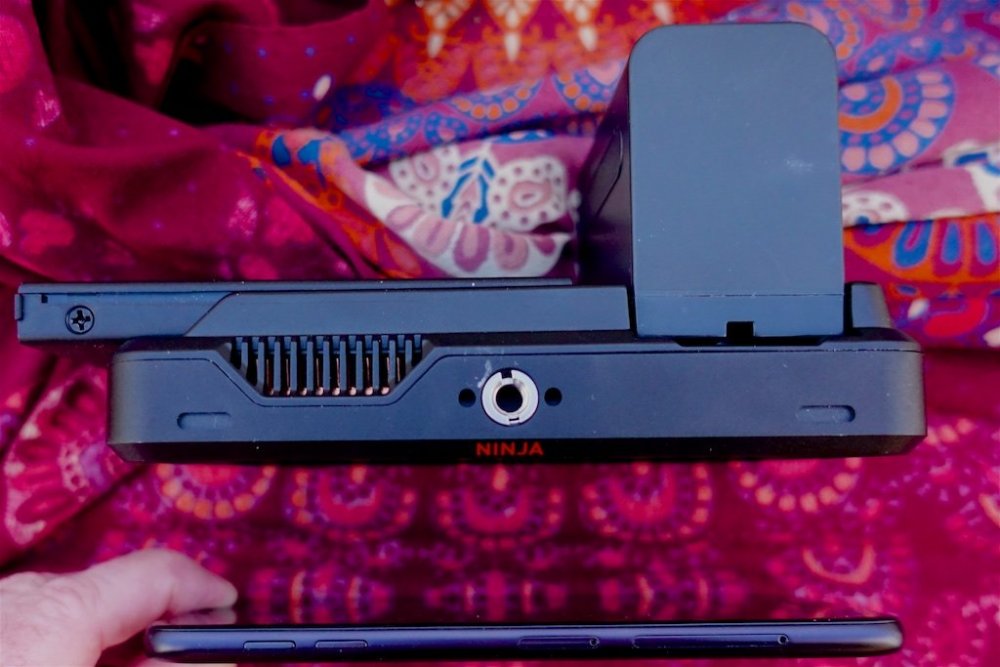
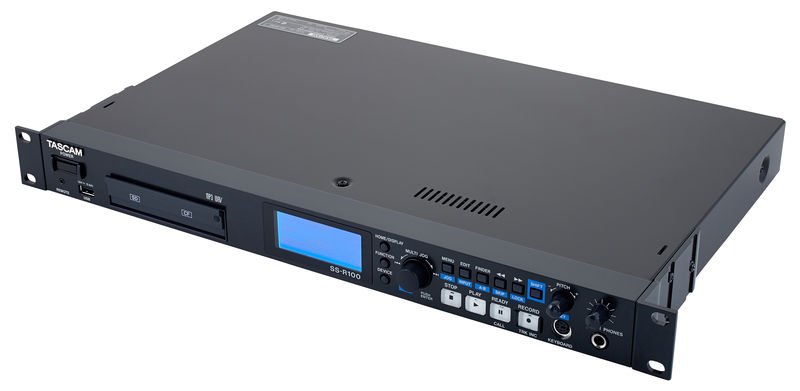
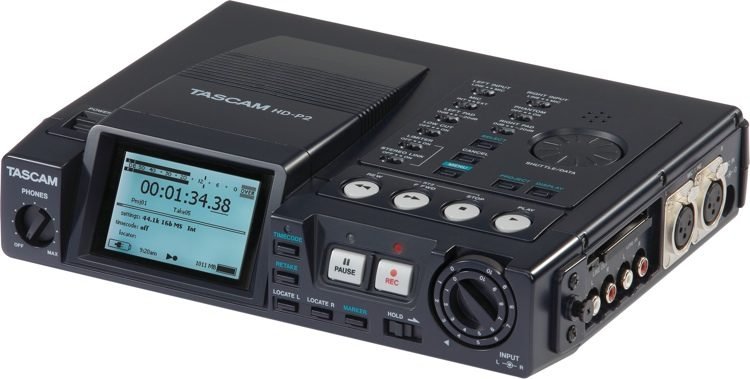

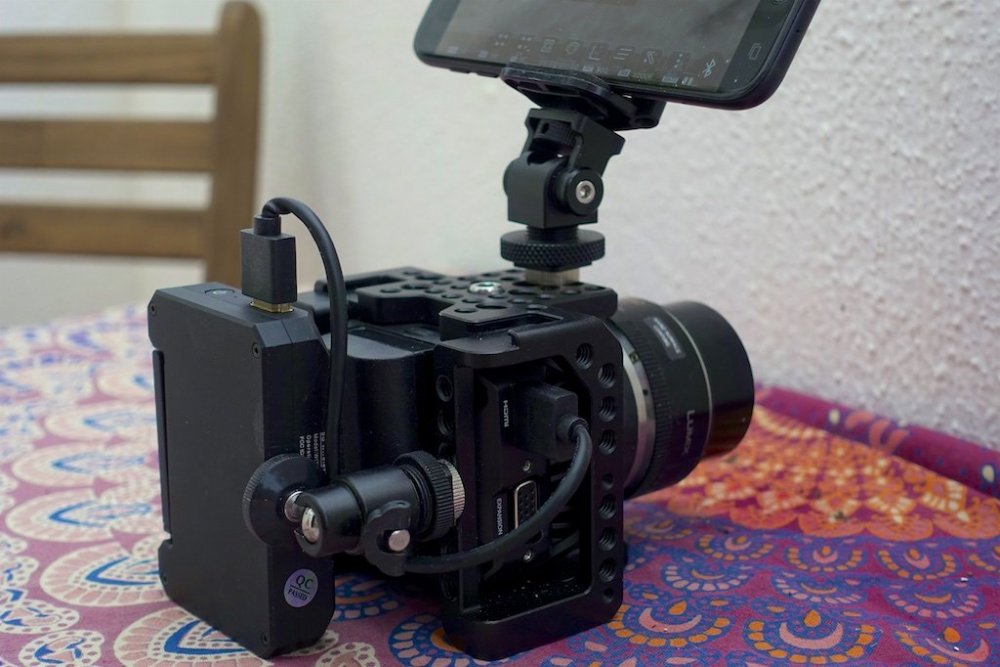

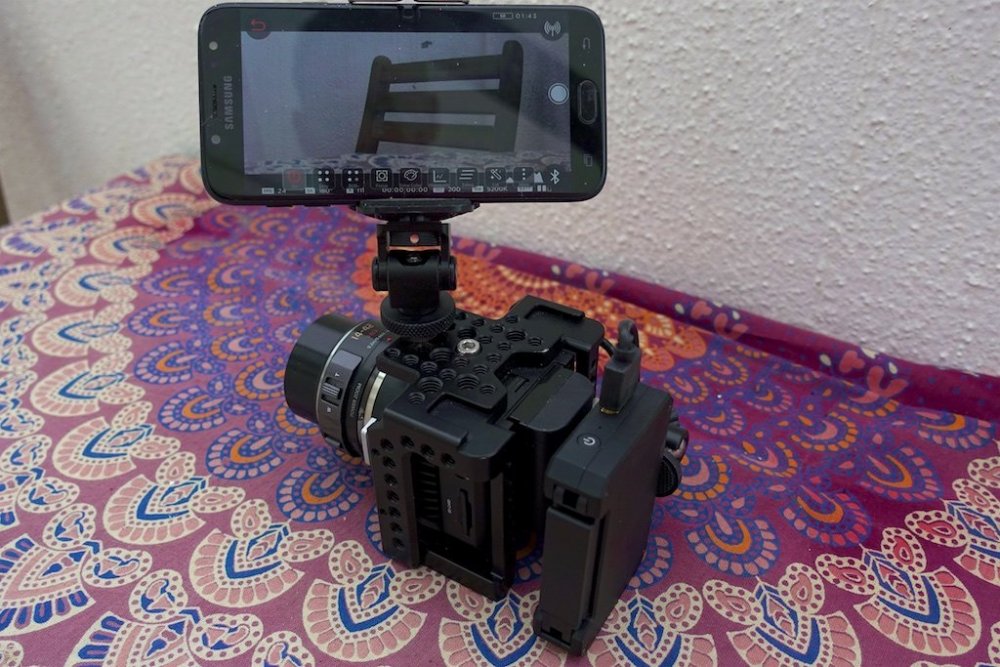




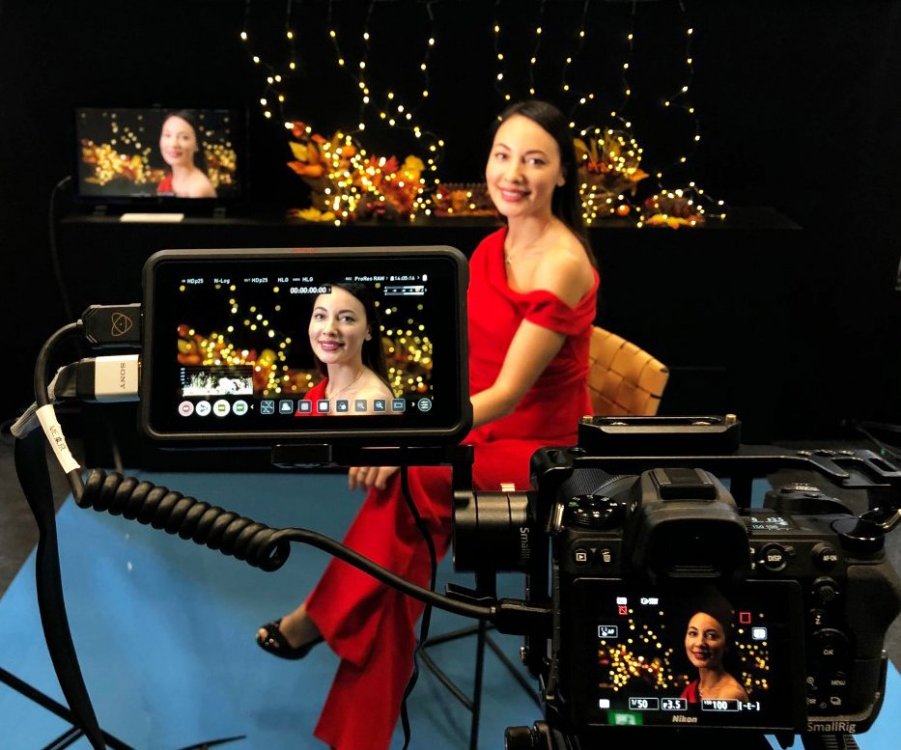
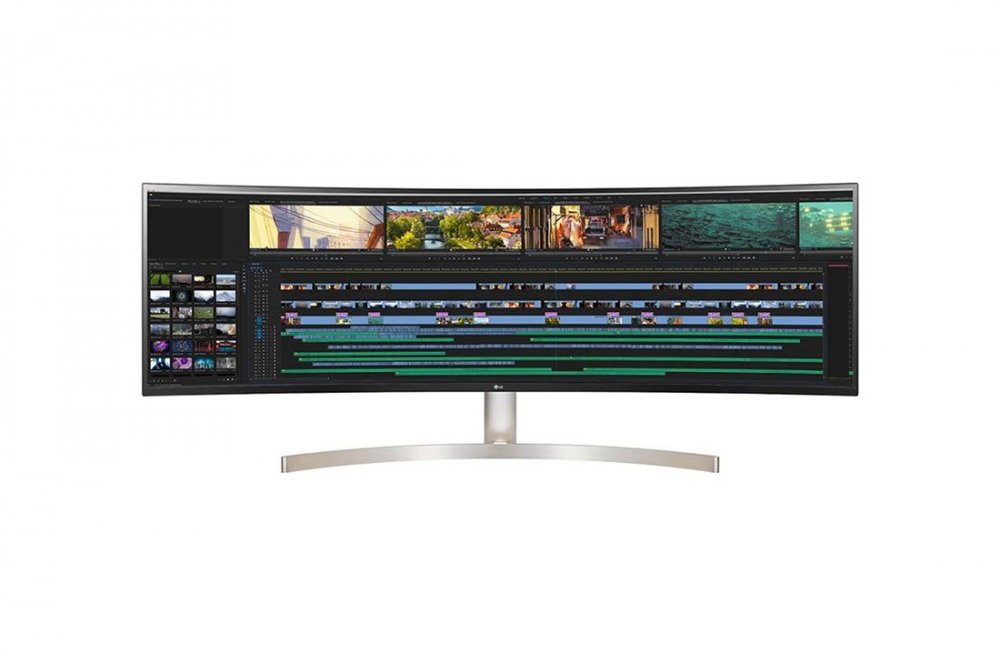
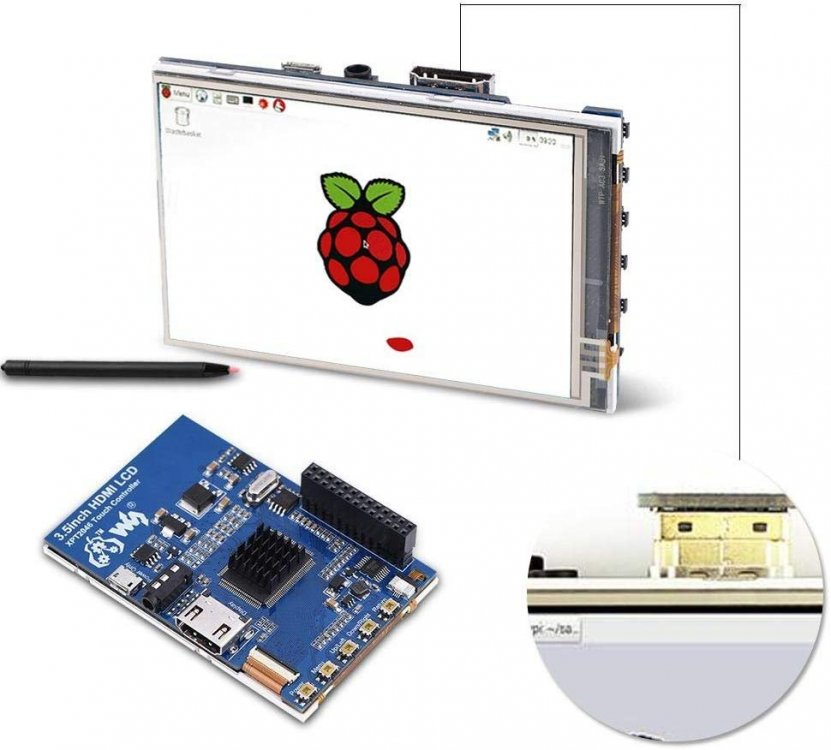
.jpg.b9d01b8cf30fc7a91c6e1d9442dfc8ae.jpg)
